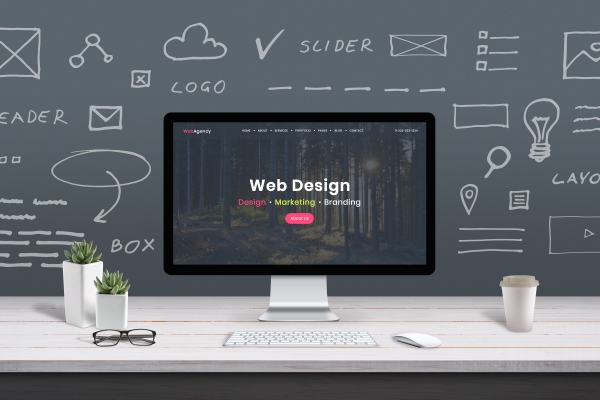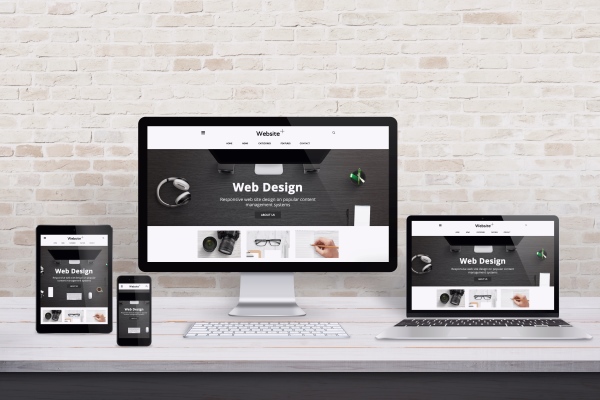
How to Design a User-Centric Website
User Experience, or UX, is a fundamental aspect of web design, encompassing all user interactions with a product or service. It focuses on creating positive and meaningful experiences by ensuring a website is easy to use, efficient, and enjoyable.
A positive user experience in web design is crucial as it determines how users perceive and interact with a brand. A well-designed website with a user-centric approach can increase user satisfaction, foster loyalty, and ultimately drive conversions and business success.
By understanding the importance of UX, web designers can create engaging and intuitive websites that meet user needs and exceed expectations. This article will explore the key principles and strategies for achieving a positive user experience through effective web design practices.
Understanding User Needs and Goals
Conducting thorough user research is essential to gain insights into the target audience’s preferences, behaviours, and motivations. This involves gathering both qualitative and quantitative data through methods such as surveys, interviews, focus groups, and analytics. By understanding user needs and goals, designers can create a website that aligns with their audience’s expectations.
Creating detailed user personas is a powerful way to embody and represent specific user groups. Personas help designers visualise their target audience, considering their demographics, interests, and pain points. This practice ensures the design remains focused on the user throughout the web development process.
Identifying user pain points and frustrations is crucial to creating a seamless and enjoyable experience. By understanding the challenges and obstacles users face, designers can address these issues through thoughtful design solutions. This may include simplifying complex tasks, improving website responsiveness, or providing clear and concise content to enhance user satisfaction.
Principles of Effective Web Design for Positive UX
Simplicity and minimalism are key principles in creating a positive user experience. A clean and uncluttered design, with ample white space and a balanced layout, enhances readability and helps users focus on important elements.
Visual hierarchy and consistency are essential for effective communication. A clear hierarchy guides users through the page, highlighting key information and calls to action. Consistent use of colours, typography, and design elements across the website creates a unified and recognisable brand identity.
Usability and functionality are critical to a positive UX. The website should be intuitive and easy to navigate, with clear labels, logical placement of elements, and efficient functionality. Users should be able to achieve their goals without confusion or frustration.
With the increasing use of mobile devices, ensuring mobile responsiveness is vital. The website should adapt seamlessly to different screen sizes and orientations, providing an optimal viewing experience regardless of the device used.
Enhancing User Experience with Interactive Elements
Animation and micro-interactions are powerful tools to engage users and provide immediate feedback. Subtle animations, such as hover effects or loading animations, add a layer of polish and interactivity to the web design. Micro-interactions, like a like button or a scrolling feature, create moments of delight and enhance user engagement.
Video and multimedia content offer diverse ways to present information and engage users. Incorporating video tutorials, product demonstrations, or background videos can enhance user understanding and increase time spent on the website. Multimedia content, including interactive infographics or audio elements, provides a richer and more immersive experience.
Navigation and Information Architecture
A clear and intuitive navigation system is crucial for a seamless user experience. Well-organised menus, logical page hierarchies, and consistent placement of navigation elements enable users to easily explore the website. Clear and descriptive labels ensure users understand their options and can efficiently find the information they seek.
Organising content for easy scannability improves readability and comprehension. Breaking content into digestible chunks, using bullet points and short paragraphs, enhances user engagement. Strategic use of headings, subheadings, and highlighted keywords guides users to the most relevant information.
Effective search functionality is essential for larger websites. A prominent search bar, predictive search suggestions, and accurate results improve usability. Implementing filters and faceted search further enhances the user experience by allowing users to refine their queries and quickly locate specific content.
Typography and Colour Scheme
Choosing the right fonts and typefaces involves selecting styles that align with the website’s tone and purpose. Legible fonts, appropriate font sizes, and thoughtful combinations of serif, sans-serif, and display fonts enhance readability and visual appeal.
Establishing a consistent colour palette is essential for creating a cohesive and recognisable design. The choice of colours should reflect the brand’s identity and evoke the desired emotions. A limited colour palette, including accent colours for emphasis, ensures a balanced and harmonious design.
Ensuring accessibility and readability is crucial for an inclusive user experience. Proper colour contrast between text and background improves readability for all users, including those with visual impairments. Providing alternative text for images and ensuring keyboard navigation accessibility are also key considerations.
Optimising Page Load Times
Image and file optimisation play a crucial role in improving page load speeds. Compressing images without sacrificing quality, using modern file formats, and lazy loading images as users scroll help reduce page weight and enhance loading times. Similarly, compressing other file types, such as CSS, JavaScript, and HTML files, further contributes to faster loading pages.
Implementing caching and utilising content delivery networks (CDNs) can significantly improve performance. Caching involves storing frequently accessed files on users’ devices, reducing server requests, and speeding up load times. CDNs distribute content across a network of servers, ensuring faster delivery of static files to users worldwide.
User Testing and Feedback
Conducting usability tests provides valuable insights into how real users interact with the website. By observing users performing tasks, designers can identify areas of confusion, frustration, or technical issues. Usability tests can be conducted at various stages of the design process to ensure an effective and user-centric design.
Collecting user feedback is essential to understanding user satisfaction and identifying areas for improvement. Feedback can be gathered through surveys, feedback forms, and user ratings. Encouraging open communication through feedback widgets or email support provides users with a platform to share their experiences and suggestions.
Iterating and improving the web design is an ongoing process. By analysing user feedback and usability test results, designers can prioritise improvements and make data-driven decisions. Regular updates and design iterations ensure the website remains user-friendly, relevant, and aligned with evolving user needs and expectations.
Creating a positive user experience is crucial for web design, as it directly impacts how users perceive and interact with a brand. By understanding user needs, goals, and pain points, designers can create engaging and intuitive websites that meet user expectations. Effective web design involves simplicity, visual hierarchy, usability, and functionality, as well as the strategic use of interactive elements, navigation, and typography. By continuously testing and iterating on the design, designers can ensure a seamless and enjoyable experience for users. By prioritising UX, web designers can drive conversions, foster loyalty, and ultimately drive business success.







